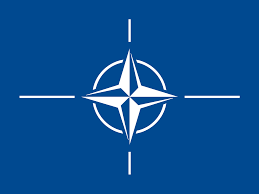
The United States Army is setting a critical milestone in its modernization agenda with a planned demonstration in 2026 for contenders in its ‘ultra long-range’ Launched Effects (LE) program. This initiative represents a significant strategic pivot, aiming to develop and field a new class of air- and ground-launched unmanned systems capable of penetrating and operating deep within the sophisticated Anti-Access/Area Denial (A2/AD) environments projected by peer adversaries. The demonstration will serve as a competitive fly-off, evaluating mature technologies from industry to address one of the most pressing challenges for future ground combat: projecting power and conducting reconnaissance at extended ranges.
Launched Effects are a cornerstone of the Army’s future warfighting concept, Multi-Domain Operations (MDO). These are not simply drones, but a family of network-enabled, attritable unmanned systems designed to be launched from Army aviation platforms—such as the Future Long-Range Assault Aircraft (FLRAA) and Future Attack Reconnaissance Aircraft (FARA)—as well as ground vehicles. By deploying these systems, the Army intends to extend the reach, lethality, and survivability of its manned formations, allowing them to sense, target, and strike adversaries from standoff distances, thereby reducing risk to personnel and high-value assets.
The Evolution of Launched Effects in Army Doctrine
The concept of Launched Effects has evolved considerably over the past decade, originating as a key enabler for the Army’s Future Vertical Lift (FVL) ecosystem. Initially, the program was segmented into different range categories: Short-Range, Medium-Range, and Long-Range. The recent emphasis on an ‘ultra long-range’ capability reflects a direct response to the pacing challenges presented by China in the Indo-Pacific and Russia in Eastern Europe. Lessons from recent conflicts, particularly in Ukraine, have underscored the decisive impact of unmanned aerial systems (UAS) in modern warfare for reconnaissance, targeting, and electronic warfare, validating the Army’s doctrinal shift.
This new focus on extreme ranges—likely extending hundreds of kilometers beyond the forward line of troops—is intended to provide corps and division commanders with organic assets capable of shaping the deep battlespace. These systems are envisioned to hold at-risk an adversary’s critical command and control nodes, integrated air defense systems (IADS), and long-range fires capabilities, which previously would have been the exclusive domain of Air Force or Navy assets. The 2026 demonstration is therefore not just a technical evaluation but a validation of this operational concept.
Strategic Implications for Multi-Domain Operations
The development of ultra long-range LEs is fundamental to the Army’s ability to execute MDO. In a potential conflict in the Indo-Pacific, for example, these systems could be launched from rotorcraft or ground-based launchers to conduct reconnaissance over vast maritime and terrestrial distances, identify and track targets, and prosecute them with kinetic or non-kinetic effects. They are designed to function as a ‘swarm,’ with different LE variants performing specialized roles as sensors, jammers, decoys, or strike platforms, creating complex dilemmas for enemy defenses.
This approach embraces the concept of ‘affordable mass.’ Rather than relying solely on expensive, penetrating platforms, the Army aims to deploy large numbers of relatively low-cost, attritable LEs to saturate and dismantle an enemy’s A2/AD network. This enhances the effectiveness of other joint force assets, such as fifth-generation fighters and long-range bombers, by suppressing threats and providing critical targeting data. The strategic goal is to ensure the Army can contribute to the joint fight from the land domain, even when facing a technologically advanced adversary.
Key Actors and Industry Contenders
The U.S. Army’s Program Executive Office (PEO) for Aviation is spearheading this effort, working closely with the Army Futures Command. The 2026 demonstration signals to the defense industry that the Army is ready to move from conceptual work to tangible prototyping and acquisition. While specific contenders have not been formally announced, the field is expected to include major defense primes and specialized UAS manufacturers.
Established players like Lockheed Martin (Sikorsky), Bell (Textron), Northrop Grumman, and Raytheon (RTX) are likely to leverage their extensive experience in aviation and unmanned systems. Additionally, companies such as General Atomics, known for its Predator and Reaper drone families, and a host of more agile technology firms are expected to compete. The key technical challenges they must overcome include developing highly efficient propulsion systems for extended endurance, autonomous navigation in GPS-denied environments, and resilient, low-probability-of-intercept communication links to maintain command and control over vast distances.
From Demonstration to Fielding: The Path Ahead
A successful demonstration in 2026 would pave the way for a rapid prototyping phase, potentially leading to a formal program of record by the end of the decade. However, the path from demonstration to fielding is fraught with challenges. Programmatic hurdles include securing stable, long-term funding amidst competing defense priorities and ensuring seamless integration of these new systems into the Army’s broader command and control architecture, a key objective of the Joint All-Domain Command and Control (JADC2) initiative.
Analysts note that the timeline for achieving Initial Operational Capability (IOC) for such a complex system would likely be in the early 2030s. The outcome of the 2026 event will be a crucial determinant of that timeline and will heavily influence the future composition of the Army’s aviation and long-range precision fires portfolios. Ultimately, this demonstration is a pivotal moment, signaling the Army’s commitment to developing the asymmetric capabilities required to deter and, if necessary, defeat a peer competitor in the conflicts of the future.
Source


